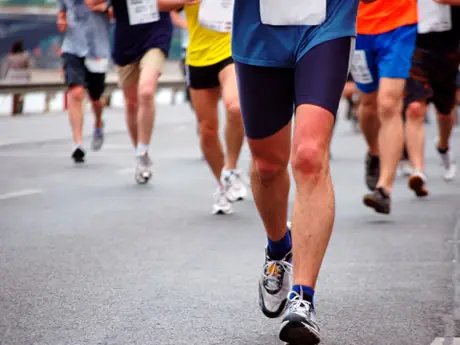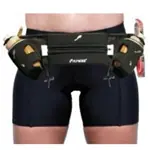While preventing injuries is the first concern of many runners, the other is performance. It turns out that a faster cadence may be able to help you in that department as well. "A slower cadence generally results in increased braking forces, similar to tapping your car brakes while driving," explains Gonser. Additionally, that means an increase in the time your foot is in contact with the ground, which translates into a loss of energy that could be used to push off and propel yourself forward.
More: Improve Your Stride Without Trying
How to Increase Cadence
The transition can take 6 to 8 weeks before you begin feeling comfortable with the quicker cadence. It takes diligence and focus over those weeks to remain in tune with your stride rate, paying attention not only to turnover, but also knee drive and landing midfoot under your body. "Begin by shortening your stride and practice with a metronome so you understand what 180 steps per minute sounds and feels like," advises Gates. If you run with music, consider downloading a metronome or songs with 180 beats per minute.
More: Music to Boost Your Exercise Routine
Gonser advises tackling this task with caution, as some residual soreness may occur as a result of the increased reliance on different muscles and tendons. "Runners should build up the focused cadence work gradually," he says. "As little as 10 to 15 percent of initial cadence attention can make even the most experienced runners sore. Over time, grow your percentage until you can sustain your total run volume with little to no soreness."
More: Should You Change Your Running Form?
As you begin to work on increasing your cadence, imagine a laser shooting out of the front of your shoe, which should be parallel to the ground at the point of impact. Heel strikers tend to have their toes pointed upwards and others make the mistake of having them pointed downwards. Also work on implementing a slight forward lean and landing on a bent knee, rather than a straight leg.
Gates recommends a marching drill that, over time, can help train your body and mind to achieve the new cadence. "Start by standing tall, with your shoulders back, and begin marching in place and swinging your arms, which should be bent at 90 degrees, like you're walking," he says. Once you get the form down, speed up to a jog, lift your knees and drive your arms. Maintain a forward gaze throughout this exercise, rather than looking at the ground. As you begin to run forward, maintain good posture and work on landing midfoot under your body.
Along with form drills and simple strength work, balance exercises can help you become a faster and less injury-prone runner. Cadence is only one piece of the puzzle. "None of us are cut from a perfect mold of anatomy," says Gonser. "While some are closer than others, every runner is best served by improving that. You can have great running form, but if your anatomy is nonexistent, you'll be neither fast, nor injury free."
More: Improve Your Running Form With Drills
 Sign up for your next race.
Sign up for your next race.- 2
- of
- 2
About the Author

Get ACTIVE on the Go


Couch to 5K®
The best way to get new runners off the couch and across the finish line of their first 5K.
Available for iOS | Android







Discuss This Article